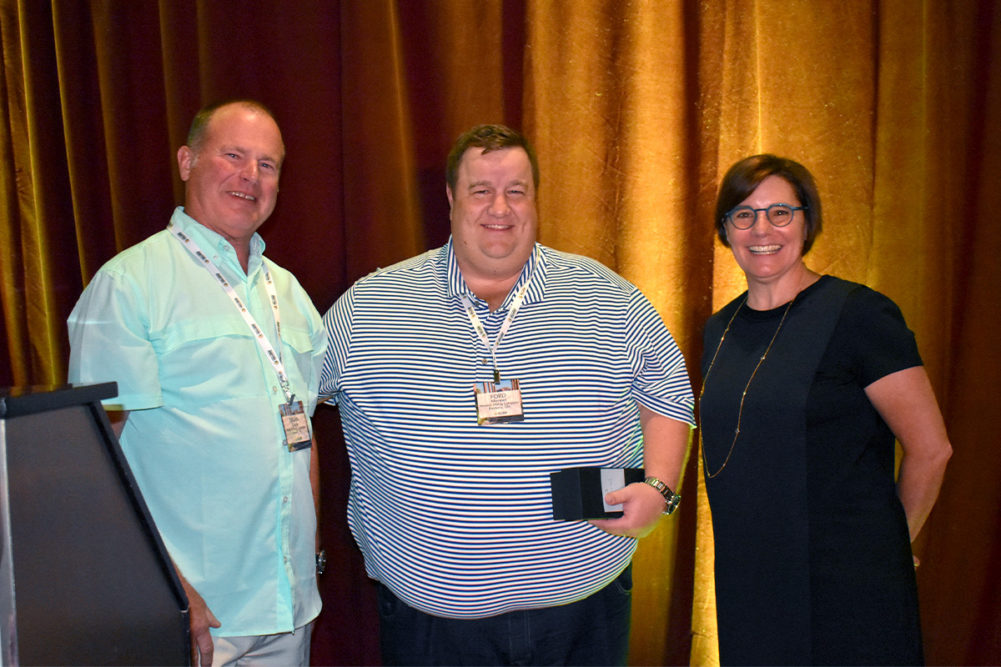 Josh Sosland, editor of Milling and Baking News. —
Josh Sosland, editor of Milling and Baking News. —KANSAS CITY Since her return to the North American Millers’ Association in 2020, the group’s president Jane DeMarchi has had a full plate. Initial changes instituted during her tenure ranged from an embrace of fiscal discipline to help restore the group’s balance sheet and an updated staffing structure to the adoption of a refreshed organizational logo and improving the quality of presentations at the group’s spring and annual meetings. At this year’s annual meeting, NAMA took steps to launch its first comprehensive strategic planning process in a generation. Ms. DeMarchi said updating the group’s strategic plan had been on her radar since not long after she was named president. Her decision to urge the board to move forward now was precipitated when she was approached earlier this year by a new member of the executive committee who thoughtfully asked what one or two top strategic priorities NAMA was most intent on pursuing. She conceded she did not have a ready answer and that the group needed one. Shortly after NAMA was established in 1998 with the merger of numerous existing processing organizations, the group held a strategic planning session in Kansas City and drafted a mission statement and a series of strategic goals. The objectives adopted nearly 25 years ago largely have stood the test of time. Free trade, good quality grain, effective advocacy on behalf of NAMA members, expending resources to boost consumption and enhanced communications all seem like aims well aligned with the interests of today’s milling industry. Still, to the question of what one or two top strategic goals NAMA should pursue most aggressively, it’s possible or even likely a list in 2022 will appear different than the one crafted by the group’s founders. An effort by the NAMA board in 2016 to update the strategic plan showed foresight with a decision to add a supply chain committee to the organization’s standing committees. Still, the resulting plan was not the “working document” Ms. DeMarchi and incoming NAMA chairman Brian Doyle believe will be necessary. Toward that end, the group made the decision to improve the planning process both by engaging a professional facilitator — Roots and Legacies of Manhattan, Kan. — and committing to seeking input from a broad group of flour-based foods stakeholders, beyond members of the NAMA board and the strategic planning task force. A transition to new leadership — Brian Doyle of King Milling as chairman of NAMA and Tedd Kruse of ADM Milling and Baking Solutions as vice chairman — added to the sense of positive change. So did an announcement that Jessica Exley of Cargill, Emily Likens of Knappen Milling and Meredith Nelson of General Mills will serve on the NAMA board, marking the first time three women will have board seats. Ms. DeMarchi called the milestone important, while acknowledging the group has more to accomplish in terms of diversity. Against such a solid backdrop of renewal at the NAMA annual meeting, the traditions of NAMA seemed to have only grown richer and more deeply appreciated by its membership. It’s a sense graciously articulated at the event by former chairman Mark Kolkhorst in accepting an honorary NAMA membership. How wonderful that the chairman’s gavel at the NAMA annual meeting was passed from a fifth-generation family member leading a 136-year-old milling company (Ford Mennel) to a fourth-generation family member leading a 132-year-old milling business (Brian Doyle). A touching augur of renewal was the presence at the NAMA annual meeting of Frederick Mennel, the new son of Ford and Kate Mennel. It was the first time in memory, perhaps ever, that a NAMA (or Millers National Federation) chairman was accompanied by a newborn child. The young Mr. Mennel is the sixth generation of the Mennel family to attend a NAMA/MNF annual meeting. The changes the strategic planning process will bring to NAMA and the milling industry remain to be seen and will require millers and others to avail themselves of the opportunity to thoughtfully participate. The serious, robust process being undertaken certainly offers the industry a promising avenue forward not to be missed.






